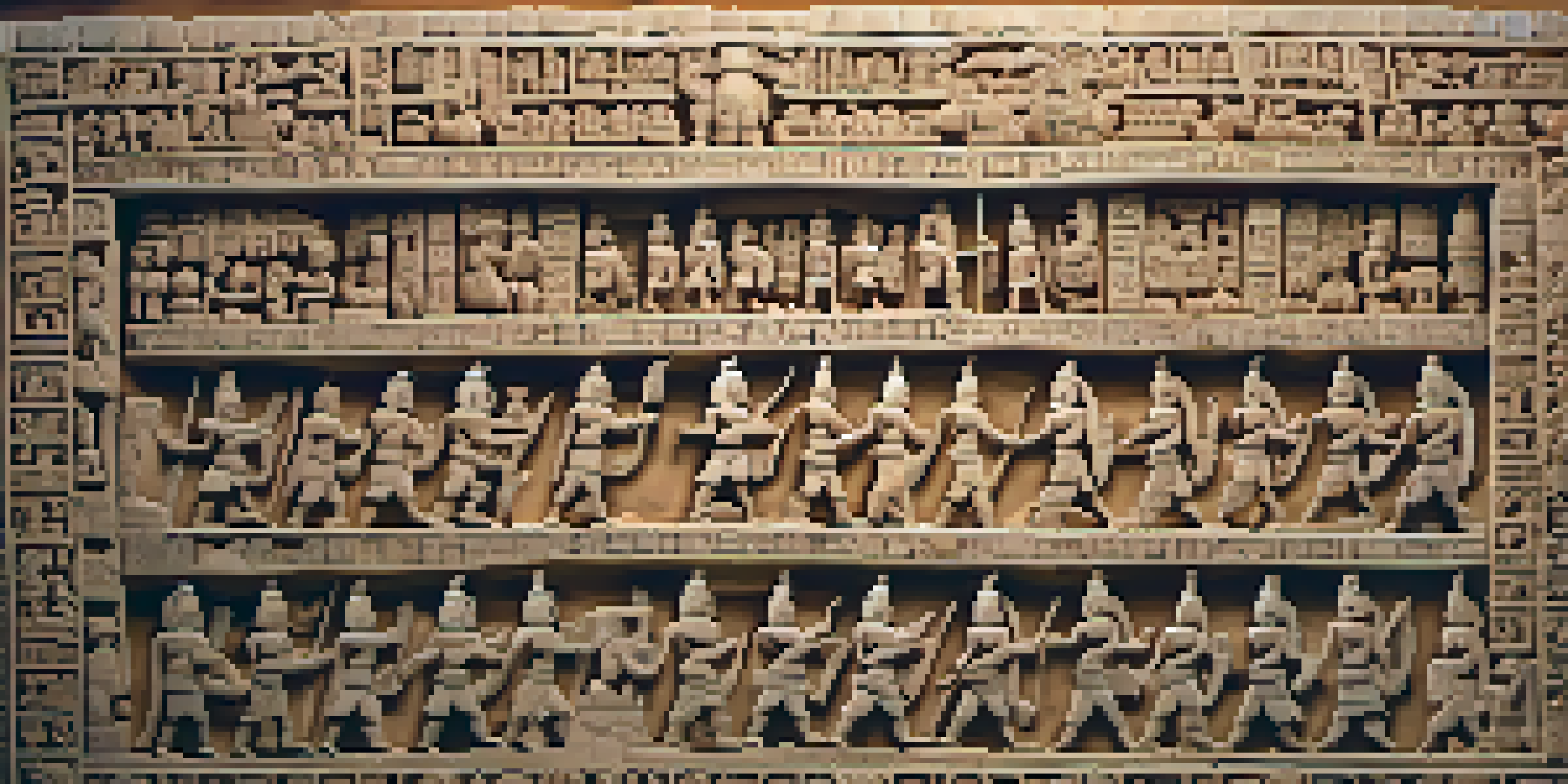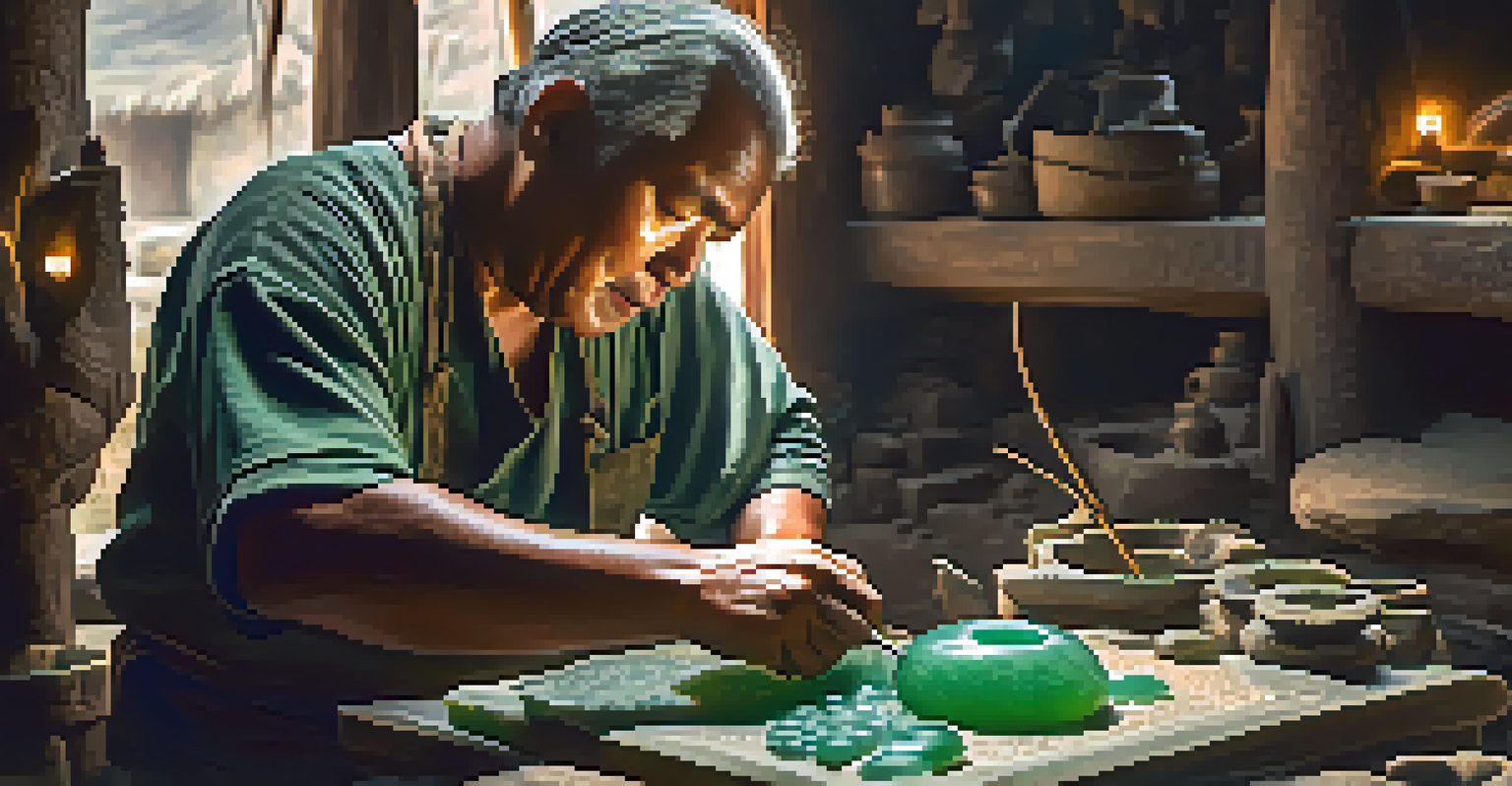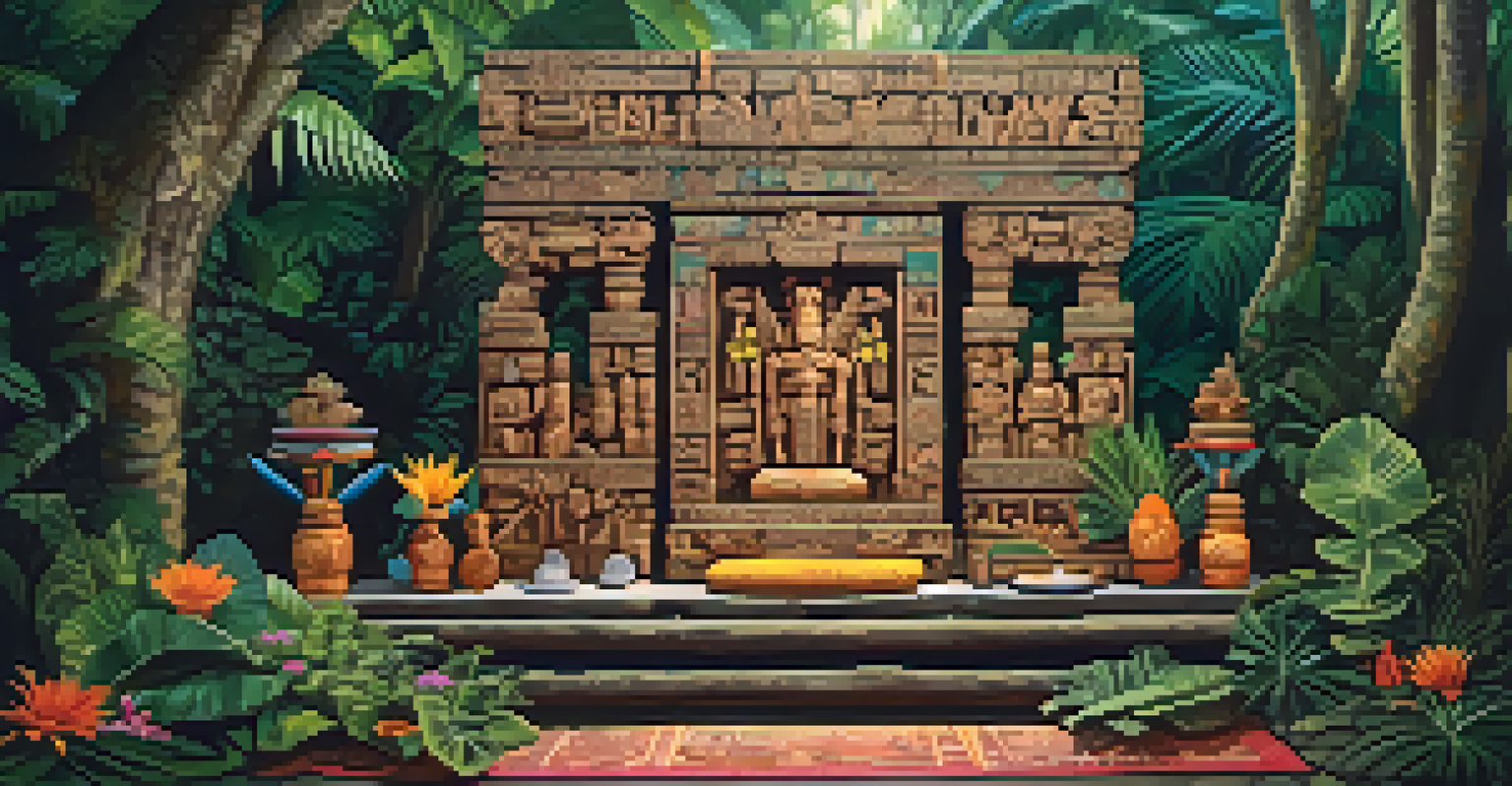Carving Techniques of the Maya: A Cultural Perspective

The Historical Significance of Maya Carving Techniques
Maya carving techniques are not just about aesthetics; they are deeply rooted in the civilization's history. These carvings served as a means of communication, preserving the stories and beliefs of the Maya people for future generations. From intricate depictions of gods to detailed scenes from daily life, each carving tells a unique story that reflects their rich culture and worldview.
The past is not dead. It is living in us, and we are living in it.
Moreover, the carvings were often created for significant purposes, such as marking important events or honoring deities. This cultural significance makes the art form a vital element in understanding the Maya civilization's social structure and religious practices. Each piece is a window into the past, revealing the values and priorities of a society that thrived for centuries.
In essence, the art of carving was a way for the Maya to connect with their history and identity. As we explore these techniques, we gain insight into the complexities of their civilization and the importance they placed on artistic expression.
Materials Used in Maya Carving: A Natural Palette
The Maya utilized a variety of natural materials for their carving endeavors, with limestone, jade, and wood being some of the most common. Limestone, abundant in the region, was often chosen for its workability and durability, making it a popular choice for larger monuments and structures. Jade, on the other hand, was highly valued not only for its beauty but also for its perceived spiritual significance.

Wood was another vital material, particularly for smaller, intricate carvings. The Maya were skilled at selecting the right type of wood, often opting for hardwoods that could withstand the test of time. Each material brought its own unique qualities to the art form, allowing artisans to express their creativity in diverse ways.
Maya Carvings Reflect Cultural Identity
Maya carving techniques serve as a vital means of communication, preserving the civilization's history, beliefs, and social structure.
By examining the materials used, we can appreciate the Maya's deep connection with their natural environment. This relationship influenced not only their carving techniques but also their overall cultural practices and spiritual beliefs.
Traditional Tools: Craftsmanship and Precision
The tools used by Maya carvers were essential for achieving their remarkable precision and detail. From simple chisels made of stone to more advanced tools fashioned from obsidian, each instrument played a crucial role in the carving process. These tools allowed artisans to create intricate designs and textures, showcasing their skilled craftsmanship.
Art is the most beautiful of all lies.
Interestingly, the Maya also employed techniques like polishing and sanding to refine their creations further. This meticulous attention to detail reflects the high standards of artistry within their culture. The use of such specialized tools highlights the dedication and expertise that went into each carving, making them not only works of art but also a testament to the artisans' skills.
Therefore, the tools of the trade are more than just instruments; they are a symbol of the ingenuity and artistry of the Maya civilization. They represent the blend of functionality and creativity that defined their carving techniques.
Symbolism in Maya Carvings: More Than Meets the Eye
Maya carvings are rich in symbolism, often depicting elements that hold significant meaning in Maya mythology and daily life. For instance, certain animals, such as the jaguar or serpent, might symbolize strength or rebirth, respectively. These symbols were not randomly chosen; they were deeply embedded in the Maya worldview and conveyed messages that resonated with their spiritual beliefs.
Moreover, the use of specific colors and patterns also carried symbolic weight. Each hue was believed to have its own meaning, influencing how the carvings were perceived by the community. This layer of symbolism adds depth to the art form, transforming each piece into a narrative that communicates the values and beliefs of the Maya people.
Natural Materials Shaped Artistry
The Maya utilized various natural materials like limestone, jade, and wood, which influenced their carving techniques and artistic expression.
Understanding the symbolism in these carvings allows us to appreciate them on a deeper level. It's a reminder that art often serves as a bridge between the tangible world and the spiritual realm, enriching our understanding of the culture it represents.
The Role of Religion in Maya Carving Practices
Religious beliefs played a pivotal role in shaping the carving practices of the Maya civilization. Many carvings were created as offerings to the gods or as part of rituals designed to appease deities. This spiritual connection infused the artistic process with purpose, making each carving a significant part of their religious expression.
Temples and altars often featured elaborate carvings that depicted religious ceremonies, showcasing the importance of these practices in the daily lives of the Maya. The carvings served as both a form of worship and a way to preserve their religious narratives for future generations. Through this lens, we can see how art and spirituality were intertwined in Maya society.
Thus, the religious context of Maya carvings highlights their role not just as decorative art but as crucial components of a broader spiritual framework. They are reminders of the culture's deep reverence for the divine and the ways in which they sought to honor their beliefs through artistic expression.
Carving Techniques: Methods and Processes
The process of creating a carving in Maya culture was as intricate as the designs themselves. Artisans would start by sketching their designs onto the chosen material, ensuring that the layout was precise before they began the actual carving. This careful planning was essential for achieving the desired outcome, as it laid the groundwork for the entire piece.
Once the design was in place, the carvers employed various techniques, such as incising and relief carving, to bring their visions to life. Incising involved cutting into the material to create detailed patterns, while relief carving raised certain elements above the surface for a three-dimensional effect. These methods allowed for a dynamic interplay of light and shadow, enhancing the visual impact of the carvings.
Art and Religion Intertwined
Religious beliefs significantly shaped Maya carving practices, with many artworks created as offerings or representations of spiritual narratives.
Ultimately, the combination of methodical planning and skilled execution resulted in stunning works of art that have stood the test of time. The techniques used by the Maya highlight their artistic ingenuity and their ability to transform raw materials into meaningful expressions of their culture.
Preservation and Legacy of Maya Carvings Today
Today, the legacy of Maya carvings continues to captivate and inspire people worldwide. Preservation efforts have become crucial in protecting these historical treasures from environmental degradation and human interference. Museums and cultural institutions play a vital role in showcasing these artworks, allowing new generations to appreciate the craftsmanship and cultural significance behind each piece.
Moreover, contemporary artists often draw inspiration from traditional Maya carving techniques, blending ancient methods with modern interpretations. This fusion not only keeps the art form alive but also encourages a dialogue between past and present, ensuring that the rich heritage of the Maya civilization endures.

In conclusion, the preservation of Maya carvings is not merely about safeguarding artifacts; it’s about honoring a culture that has contributed so much to our understanding of art and history. As we continue to explore and celebrate these masterpieces, we forge a deeper connection with the Maya legacy.